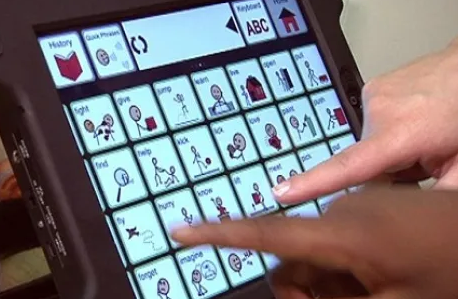Introduction
The intersection of technology and autism spectrum disorder (ASD) is forging a transformative path, significantly impacting the lives of individuals with ASD. From fostering communication and learning specific skills to gaming and alternative communication technologies, the advancements in virtual agents, artificial intelligence, virtual reality, and augmented reality are reshaping the landscape for those with autism.
The Comfort of Predictability
Research indicates a profound connection between individuals with autism and technology, particularly computers. The sense of safety and predictability offered by technology aligns with the structured nature that many individuals with autism find reassuring. This connection is further strengthened by the repetitive behaviors exhibited during technology use, a characteristic often associated with ASD.

Learning Specific Skills
Technology is proving to be a powerful tool in facilitating skill development among individuals with autism. Utilizing sensors, virtual reality, augmented reality, apps, software, and video games, researchers have explored avenues to enhance language, conceptual, and daily living skills. Whether it’s identifying colors, learning about emotions, or improving comprehension, technology plays a pivotal role in tailored skill acquisition.

In the symphony of progress, technology emerges as the transformative conductor, orchestrating a harmonious revolution that not only bridges gaps but also redefines the narrative – where the keystrokes of innovation compose a melody that resonates profoundly, revolutionizing the lives of individuals with autism.
Bhargav Kandala
Gaming for Skill Enhancement
Specific game elements, such as points, levels, and rewards, have been identified as attractive and engaging for individuals with autism. Games designed to boost math skills, emotional intelligence, comprehension, and social skills showcase the potential of gaming as an educational tool catering to the unique needs of those with ASD.

Alternative Communication Technologies
For individuals facing challenges in language and speech development, technology acts as a bridge. Alternative communication strategies, including text-to-voice applications on tablets and smartphones, empower individuals with autism to express themselves and interact with the world in ways that might be otherwise challenging.

More Benefits of Technology
Beyond skill development, technology enhances self-esteem, motivation, and organizational skills. Assistive technology, especially visual-centric tools, caters to the visual learning preferences common among individuals with autism. Whether it’s using computers, cell phones, or tablets, technology serves as a versatile tool for connecting, learning, and fostering independence.

Augmentative and Alternative Communication (AAC)
AAC technology further supports independence and communication. Apps like Proloquo2Go, Touch and Learn, and Otsimo provide customizable, engaging platforms to develop language and communication skills, embracing the unique needs of each individual.

Modeling Skills and Observational Learning
Technology aids in intentional teaching, a critical aspect for individuals with autism who may struggle with natural observational learning. Apps like Model Me Going Places and Social Adventures are designed to impart crucial social skills and behaviors through interactive, educational experiences.

Independent Living
Technology assists individuals with autism in daily living tasks, offering electronic solutions for calendars, to-do lists, and schedules. This support enhances independence and helps navigate the challenges associated with everyday life.
Safety Considerations
While acknowledging the myriad benefits, caregivers and educators must prioritize safety when introducing technology to individuals with autism. Awareness of potential online dangers, such as cyberbullying and inappropriate interactions, is crucial to ensure a secure digital environment.
Conclusion
As technology continues to evolve, its role in enhancing the lives of individuals with autism becomes increasingly evident. From skill development to fostering independence and ensuring safety, the symbiotic relationship between technology and autism opens doors to a brighter, more inclusive future.







